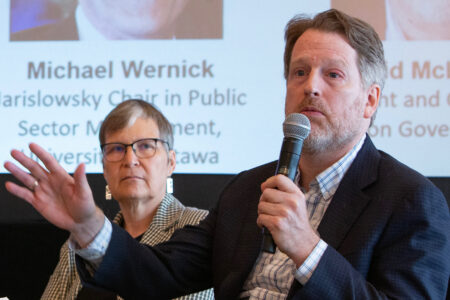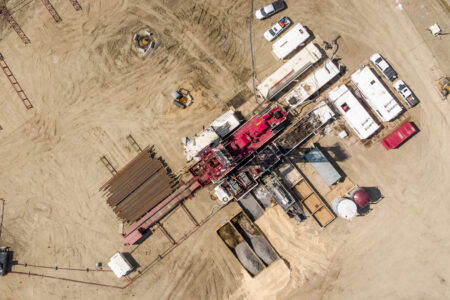
In the 2019 federal election, British Columbia could play an unaccustomed role as a beacon of sanity and yet could also witness a disconnect between the campaign and the result.
Sanity is not the first word that comes to mind for BC, of course. Its history is one of marginal players on the federal scene, and provincial politicians with a reputation for eccentricity. This year, however, BC’s peculiarity lies in the fact that its provincial politics is closely aligned — more, perhaps, than any other province — with the governing Liberals. The NDP provincial government differs with Ottawa on the issue of tanker traffic in coastal waters, and especially of the traffic carrying diluted bitumen from Alberta’s oil sands. For this and other reasons, it officially opposes the twinning of the Trans Mountain pipeline. But it also realizes that its constitutional position is weak and that the electorate is divided on the question. The opposition, as a result, is rather pro forma.
In almost every other policy area, the province is now Ottawa’s closest ally. On the two most prominent cultural questions of the current Parliament, legalization of cannabis and medical assistance in dying, BC is where the issues incubated. On infrastructure, Metro Vancouver — with its dense and growing population and increasing focus on rapid transit — is especially needy. Vancouver’s Downtown East Side has long been an epicentre of urban poverty and addictions. This has made the city and the province a leader in harm reduction, and this in turn brings the federal government to the city’s streets.
The pipeline aside, BC supports the federal side in litigation over interprovincial trade. And BC is where the politics of reconciliation with First Nations is most intense. Even on the environment, Victoria and Ottawa are quite close, most importantly, as BC is Ottawa’s chief ally on the idea of a carbon tax.
Of course, the BC NDP is also aligned with its federal counterpart. Unlike with the federal Liberals, the two wings of the NDP agree on pipelines and tanker traffic. If anything, the federal party is more adamant on these matters than the provincial one. Things are not so different between the NDP and the Greens. Provincially, the Greens support the government on confidence and supply votes. Although the Greens maintain the freedom to criticize the government and occasionally vote against it, the basic agreement seems secure. So, a very large fraction of the electoral debate will involve entities with a large measure of mutual sympathy. Differences will be in the emphasis, and facts could play a larger role than raw emotion. The central disagreement will be over the pipeline.
But all this presents a major conundrum. The strong policy affinities among the three parties on the centre-left makes each party the others’ worst enemy. In other provinces, this contradiction is of mostly academic interest. Elsewhere, one or the other of the Liberals or the NDP is clearly dominant. The major exception is the spectacular coordination failure in 2011, where an NDP surge and Liberal decline handed Stephen Harper’s Conservatives 22 seats in Ontario’s 905 area code — exactly the seats that gave him a parliamentary majority.
In BC, such coordination puzzles are a way of life. This is because for both the Greens and the NDP, BC is the stronghold. If the Greens have been a niche player even in BC, the party could now be poised to expand. Its victory in a recent Nanaimo by-election sounds like a warning shot. The federal Liberals, for their part, were strong in 2015 but on terms that could be hard to sustain. Historically, they are the third-place party, with bastions only in the Vancouver region’s leafiest neighbourhoods. All polls suggest that they will suffer a reverse and said so even before Justin Trudeau foundered on the shoals of SNC-Lavalin.
Meanwhile, the Conservatives, as is common in the Western provinces, are also a strong player. In 2015, the party finished third in seats but a strong second in the popular vote, and in most elections since the turn of the millennium they have been the strongest party province-wide by far. But Conservatives from BC are strangely silent in much of the province’s discourse. This is for two reasons.
The first is that they have no viable provincial counterpart. Their closest ally is the BC Liberal party, now in opposition. It helps that that party is the most ideologically conservative Liberal party in Canada. Its prominent members speak openly about belonging to a coalition whose raison d’être is to block the NDP. But the name “Liberal” still counts for something. The party resists the lure of engaging in a culture war. This is the party that enacted the country’s first carbon tax. It is not unusual for ex-provincial MLAs to run as federal Liberal candidates.
A major reason for the party’s neutrality on cultural questions is that elections in the province are won or lost in metropolitan — and cosmopolitan — Vancouver. The conservative part of the BC Liberal coalition puts up with silence as the price of victory.
But this electoral logic extends to federal elections as well. In those elections, the federal Conservatives are strongest in the parts of BC where the provincial Liberals are also strongest: the Interior and North. And in most elections, Conservative margins of victory in those regions are huge. Tactically speaking, those votes could be more efficiently employed elsewhere. Where elections are close, in Metro Vancouver, Conservative candidates tend to stay on a message of ethnic and social inclusiveness. The party cannot risk unguarded comments, “bozo eruptions,” including by candidates outside the region.
And therein lies a great irony. The importance of Vancouver will make the tone of the election in BC less histrionic than, say, in Alberta. The issues will be argued out rather as they are in provincial politics. To the extent that culture and identity are in play, the emphasis will be on inclusion. But the number and competitiveness of parties on the centre-left could allow the Conservative party — often, antagonistic to the city and its region — to run the table, to win a series of narrow victories over a divided opposition. Just as the political right is muted in provincial elections, so might the province’s centre and left feel voiceless in the next Parliament.
This article is part of the Provincial Dynamics and the 2019 Federal Election special feature.
Photo: Shutterstock, by EB Adventure Photography
Do you have something to say about the article you just read? Be part of the Policy Options discussion, and send in your own submission. Here is a link on how to do it. | Souhaitez-vous réagir à cet article ? Joignez-vous aux débats d’Options politiques et soumettez-nous votre texte en suivant ces directives.









